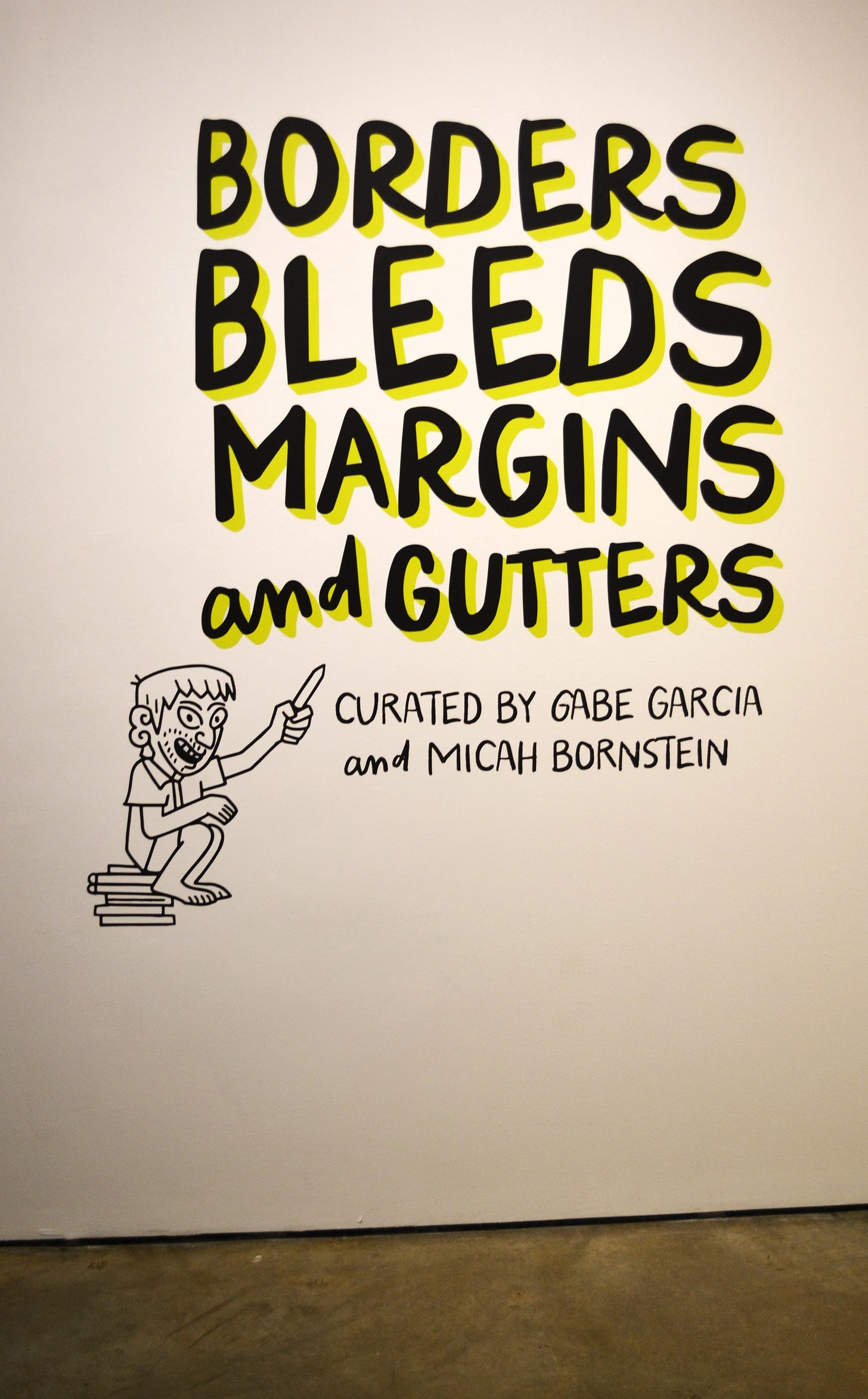A week after the Comics Sans Frontières conference at Rice University in Houston, I hit the road for another raid on an institution of elite culture by comics, the exhibit Borders, Bleeds, Margins and Gutters at the Centro de Artes in San Antonio. I took a road trip to see this exhibit because I have been interested in the challenges of displaying comic art in a museum or gallery setting for over thirty years—I curated my own comics gallery show in 1991. A few years ago I visited the biggest museum dedicated to comics art in the USA, the Billy Ireland Cartoon Library and Museum, which prompted me to think long and hard about what the best way to display comic art. I thought the Billy Ireland did a pretty good job with lots of custom-built vitrines that they call “tent deck cases.” I liked them so much that I copied them when I curated an exhibit of comic art work by Scott Gilbert at the Galveston Artist Residency. The display strategies of the Billy Ireland Museum focus on honoring the original artwork—the stuff touched by the artist. Because comic artwork is mostly fairly unimpressive unless you are close to it, the Billy Ireland’s display strategies focus on getting the viewer as close to the art as possible with as little viewing discomfort as possible.
But another display strategy involves taking a less precious approach to the original art. It should still be visible, but not necessarily resting in custom-made display cabinets. And in addition to the originals on display, large reproductions of the art could be shown on the walls. This is more-or-less the strategy employed by the curators of Borders, Bleeds, Margins and Gutters.
The exhibit was held in a big modern gallery called the Centro de Artes in a large city owned commercial space called Market Square, where you can buy a huge variety of Mexican-American tourist tchotchkes. The Centro de Artes building has two floors with large galleries on each. When I was there, there were two exhibits on view: Borders, Bleeds, Margins and Gutters and A Thousand Words: The Power of Pictures in Books.
The curators are Gabe Garcia and Micah Bornstein, and the exhibit features the work of nine comics creators. Garcia and Bornstein were comics creators who met while working for a Chicago arts nonprofit, Urban Gateways. Urban Gateways is a community-based art organization that specializes in reaching young people with classes and performances. This type of organization is a big part of the art world that is mostly not covered in elite art publications like Artforum or Artnews, or even in modest newsletters like this one. Nonetheless, a kid learning watercolor in a summer school class is part of the art world. Urban Gateways is a service-based art organization, and Garcia and Bornstein appear to base their curation on an idea of service more than connoisseurship.
Keep reading with a 7-day free trial
Subscribe to The Great God Pan Is Dead to keep reading this post and get 7 days of free access to the full post archives.




